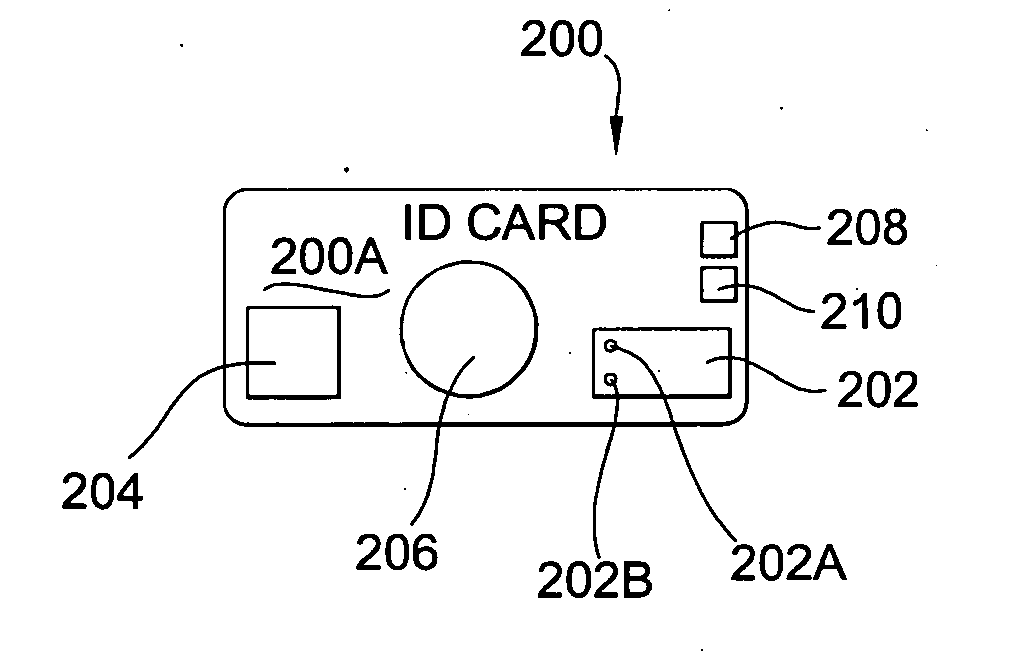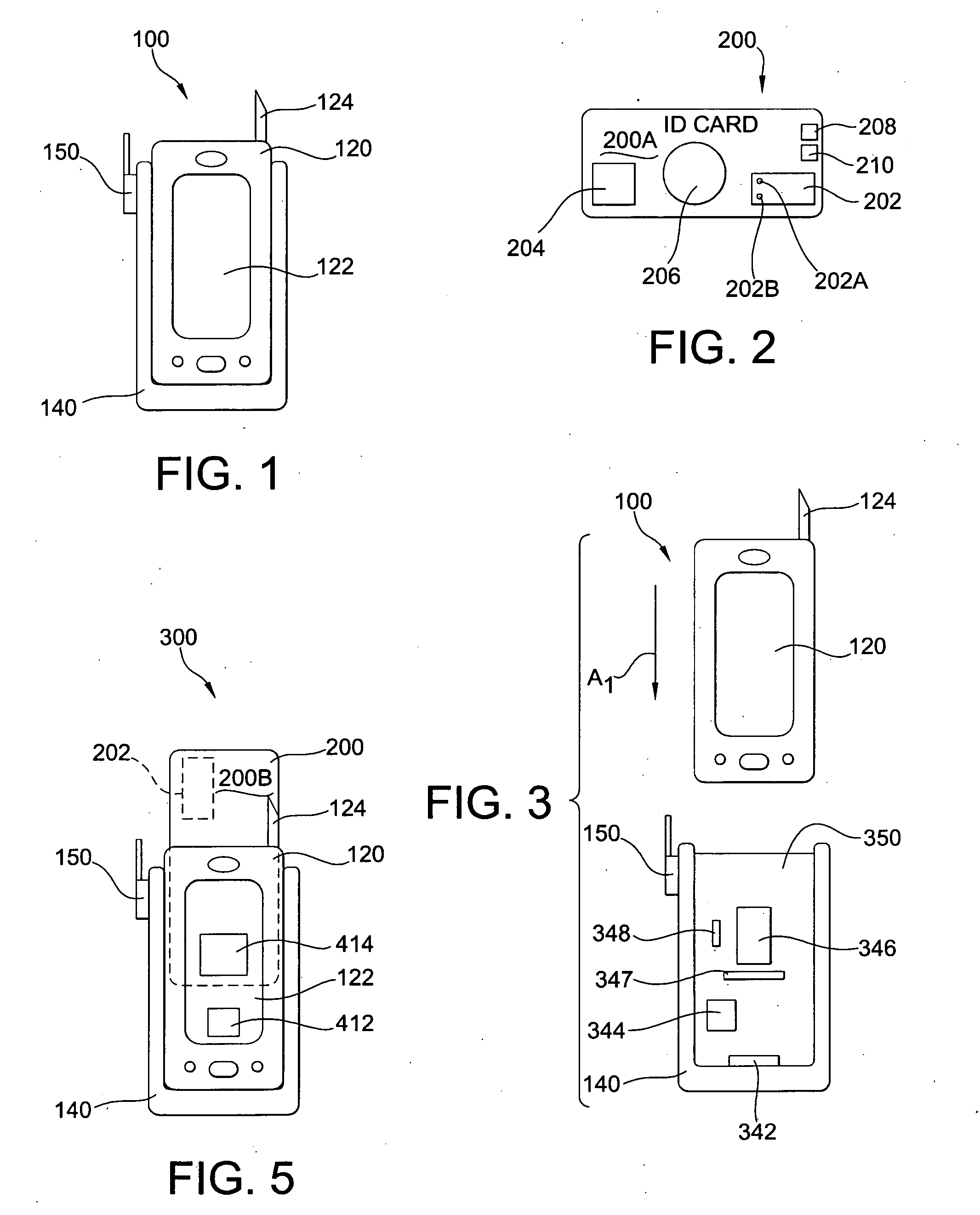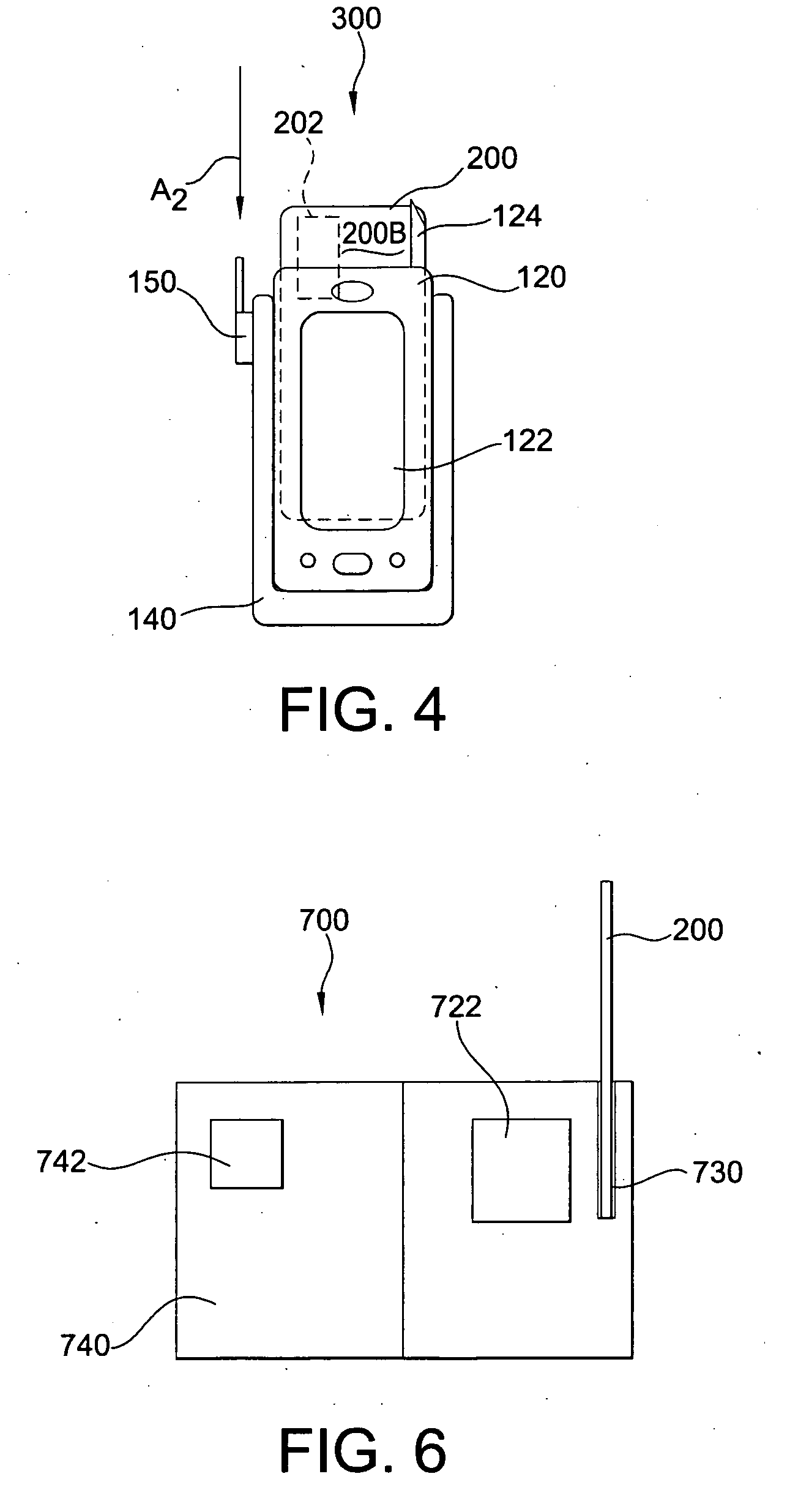Identity verification system with self-authenticating card
a self-authentication and identity verification technology, applied in the field of personal identity verification, can solve the problems of difficulty in remembering, difficulty in implementing a comprehensive central database that collects and stores significant amounts of information about an individual, and prohibitive costs of instituting such a large and comprehensive system, so as to facilitate comparison, reduce floor space, and increase the accuracy and reliability of verification.
- Summary
- Abstract
- Description
- Claims
- Application Information
AI Technical Summary
Benefits of technology
Problems solved by technology
Method used
Image
Examples
Embodiment Construction
[0043]FIG. 1 shows a first embodiment of identity-verification apparatus 100 according to the invention. In the embodiment shown, the identity-verification apparatus 100 is a mobile unit that includes a data-processing unit 120 and a card reader 140. The data-processing unit 120 is a portable, handheld electronic device with a display panel 122, such as a T-MOBILE POCKET PC or an iPaq from COMPAQ. Many different types of PDAs are suitable for use as the data-processing unit 120, as long as the device is able to store and run software for reading and / or processing data coming into it from the card reader 140. The card reader 140 is constructed as a sled for securely holding the data-processing unit 120 and, as an optional feature, is equipped with a GPS receiver-transmitter (GPS Rcvr / Xmtr) capability, as indicated by a GPS antenna 150.
[0044] It is understood that it is within the scope of the present invention to provide the identity-verification apparatus 100 as a stationary card-r...
PUM
 Login to View More
Login to View More Abstract
Description
Claims
Application Information
 Login to View More
Login to View More - R&D
- Intellectual Property
- Life Sciences
- Materials
- Tech Scout
- Unparalleled Data Quality
- Higher Quality Content
- 60% Fewer Hallucinations
Browse by: Latest US Patents, China's latest patents, Technical Efficacy Thesaurus, Application Domain, Technology Topic, Popular Technical Reports.
© 2025 PatSnap. All rights reserved.Legal|Privacy policy|Modern Slavery Act Transparency Statement|Sitemap|About US| Contact US: help@patsnap.com



